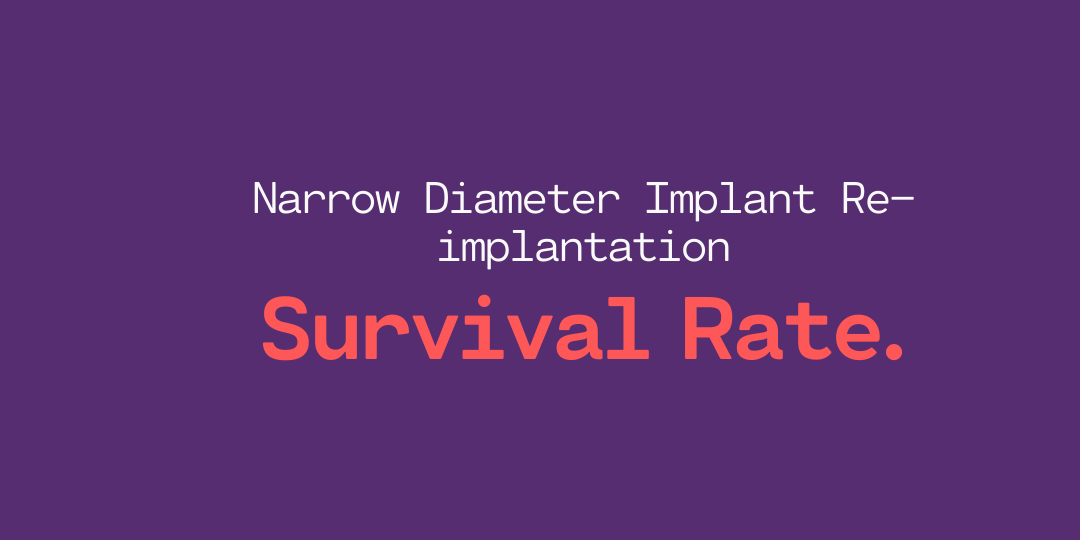Standard diameter implant have become the gold standard, particularly because of the high success rate of the procedure. However, in cases where atrophic alveolar bone is present, predictable success rates can only be achieved with bone remodeling and augmentation. Logically, this increases the treatment time for the patient and comes with possible surgical complications.
Things get a little trickier in the maxillary anterior region. After loss of teeth, we first expect progressive labial cortical bone resorption – in the labial direction, resulting in a narrow ridge. Adding to the problem, the interdental space is often very limited in the maxillary anterior region, and implants require a minimum distance of 1.5mm to the neighboring tooth.
This is where narrow diameter implants come into play. These types of implants allow the practitioner to restore a limited edentulous space. Lower bleeding time, less patient discomfort, and faster healing is also reported with narrow diameter implants.
Potential disadvantages include decreased bone to implant contact, potentially decreasing osseointegration, and increasing possible mechanical failures.
Although implant failure for standard and narrow diameter implants are relatively low, how do narrow diameter implants respond to re-implantation following failure?
Keeping in mind how frustrating it can be (for the patient and the practitioner) to have an implant fail, knowing the predictability of re-implantation with narrow diameter implants is critical.
The Evidence
835 patients with 1095 narrow diameter implants were observed for 2 years. 33 of the 1095 implants placed failed (3.01%). Out of these 33 failures, 23 implants were reimplanted – and only one failure occurred (4.35%) following re-implantation.
Risk Factors for Implant Failure
The most common cause of implant failure was infection (72.73%). The surface characteristics of the implants also showed significant influence on the failure rate of the implant. TiUnit surface implants lead to significantly higher failure rates than sandblasted, large-grid and acid-etched implants.
Re-implantation
Re-implantation success rates for narrow diameter implants were seen to be 95.65%, about the same success rate as initial implant placement.
Bone Augmentation
The success rate of implant placement for single unit restorations was significantly higher with bone augmentation, compared to without bone augmentation. Furthermore, it was shown that bone augmentation done on the buccal side was more favorable to the outcome of implant placement. This was compared to bone augmentation on the palatal side.
Clinical Takeaway
When it comes to restoring the maxillary anterior region, the challenges for the surgeon are many. This study shows that we can confidently restore the maxillary anterior region with narrow diameter implants, even after initial implant failure. Success rates are significantly increased when sandblasted, large-grid and acid-etched implants are used. Success is even greater when implantation and re-implantation is done with bone augmentation.


